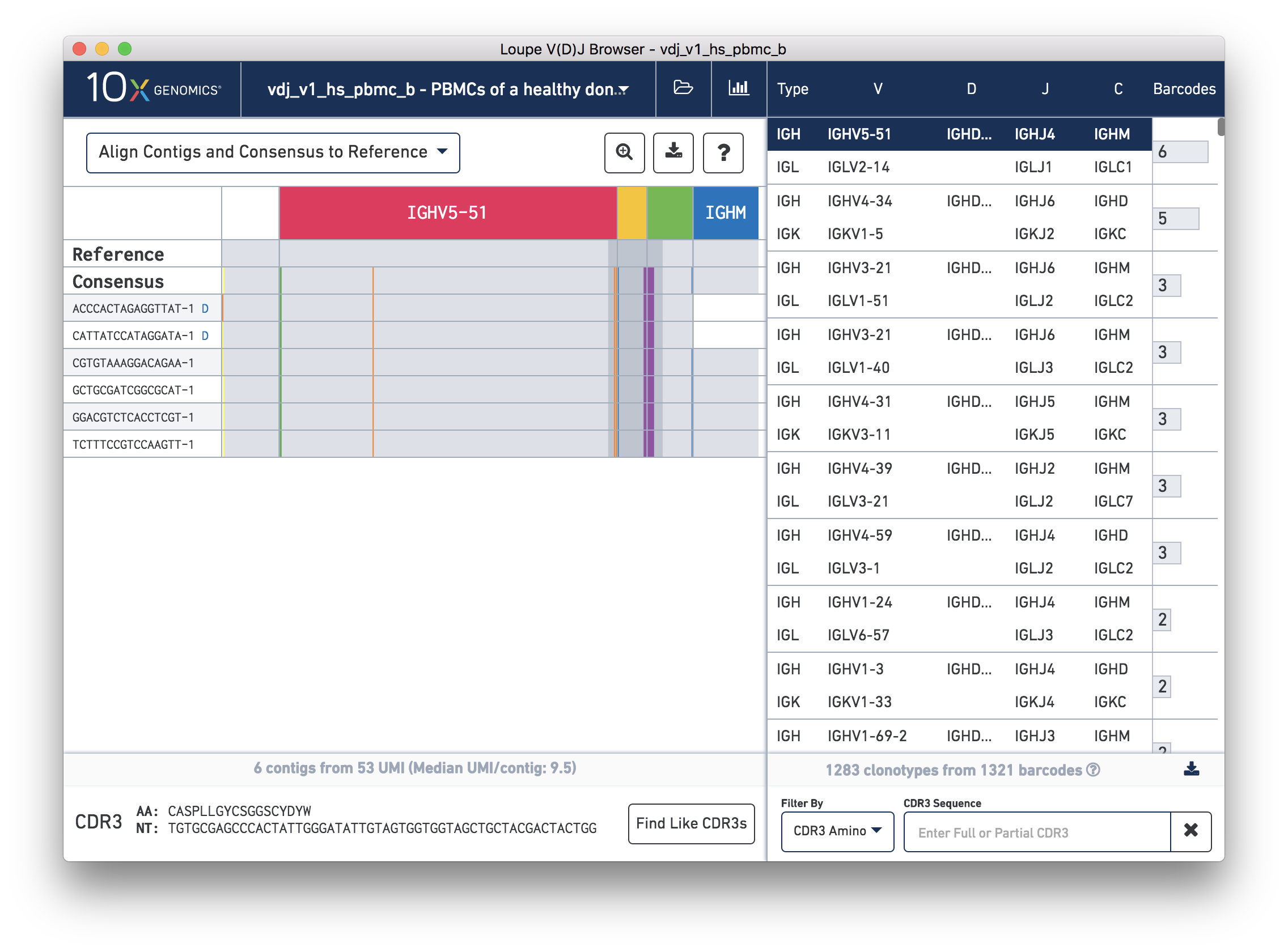10x Genomics
Chromium Single Cell Immune Profiling
Cell Ranger2.0, printed on 06/11/2025
Loupe V(D)J Browser: B Cells
Loupe V(D)J Browser 2 adds support for B cells. All the same visualizations and tools that we used on T cells are still available, with updates to accommodate analyzing B cell data. For instance, in addition to the TRA and TRB T-cell receptor chains, we now identify IGH, IGK, and IGL immunoglobin chains.
We've provided several example B cell datasets for you to download and explore. For this example, we'll use a PBMC B Cell dataset from a normal donor.
Immunoglobulin Class Switching (Isotype Switching)
Immunoglobulin class switching, or isotype switching, occurs when the constant region of a B cell V(D)J heavy chain sequence changes such that the lymphocyte produces antibodies of a different isotype. Clonotypes are defined as a set of cells with the same CDR3 sequence in the their V(D)J variable regions. Since class switching causes recombination in the constant region, outside the CDR3 sequence, it is possible that cells that produce different Ig isotypes may belong to the same clonotype.
To make it obvious where this occurs, when you click on a heavy chain in a B cell sample and the C region for a contig is different from what was annotated in the consensus, a small letter in blue indicating the isotype will appear next to the barcode.
For example, open and click the heavy chain of the top clonotype in the PBMC dataset you just downloaded. Note that the C region annotation for this consensus is IGHM. Upon clicking you'll see that the first two contigs of this chain have small blue Ds next to the barcode indicating that these contigs have constant regions annotated with IGHD. If you hover over the barcode, you'll see details about the contig including the C gene annotation in red, indicating that it differs from the consensus.

Of course, it's all the more powerful if you can compare across samples, whether those samples are from different timepoints, different conditions, or different sources. Let's take a look at the new features that allow Loupe V(D)J Browser to open and compare multiple .vloupe files at once.
- 5.0 (latest)
- 4.0
- 3.0
- 2.1
- Loupe V(D)J Browser v2.0